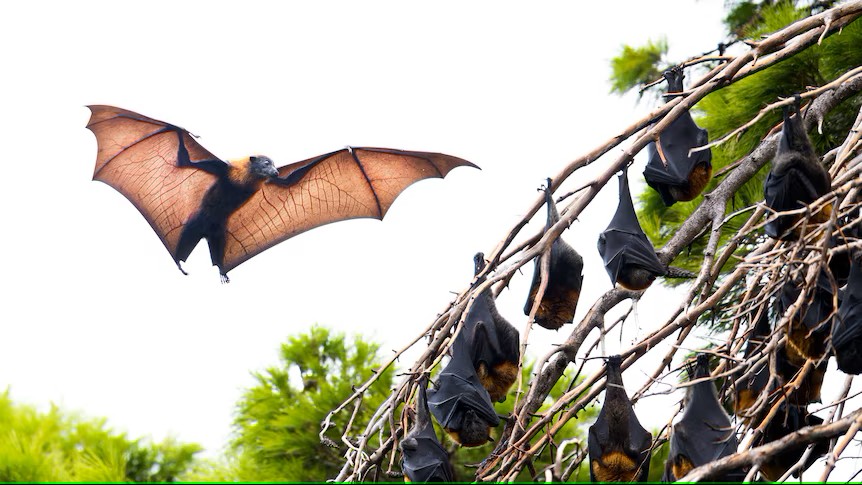
The journey and mystery of flying-foxes in South Australia
Flying-foxes, large fruit bats essential to Australia’s ecosystems, are on the move. From historical sightings on Kangaroo Island to their recent surge across South Australia, the story of flying-foxes is one of adaptation and survival amid significant environmental changes.
Historical sightings on Kangaroo Island
Flying-foxes on Kangaroo Island aren’t a new sight. In 1946, the Kangaroo Island Courier reported an encounter with a flying fox near Vivonne Bay, where a 30-inch wingspan bat was retrieved after being attacked by dogs. In 1937, a flying fox skeleton was found on Flinders Chase, marking the first official record of this species in South Australia.
While these sightings were rare and somewhat mysterious, they foreshadowed a broader movement. Now, flying-foxes have expanded into regions once thought beyond their range as they search for food and shelter.
Expansion across South Australia
Today, grey-headed flying foxes have traveled as far as the Eyre Peninsula and are now common in Adelaide. Their numbers have soared since 2010, with Adelaide’s Botanic Park now hosting up to 50,000 flying foxes. Dr. Karl Hillyard, an ecologist with South Australia’s Department of Environment and Water, notes that their presence is relatively recent, illustrating how landscapes change over time.
From small camps of 100-200 bats in Port Pirie, Port Augusta, and Mount Gambier to sightings as far as Woomera and Yalata, the expansion of flying foxes across South Australia has been rapid and remarkable.
Why Are flying-foxes moving?
Flying foxes follow food sources like nectar, flowers, and fruit across the landscape. As their native habitats decline due to urban development and climate change, they are forced to expand their range. Some camps swell in numbers as food sources grow, while others shrink. Tracking studies show they follow established bird migration paths, using natural and man-made landmarks like roads and railways as guides.
The importance and vulnerability of flying-foxes
Though widespread, flying-foxes remain at risk. As herbivores, they play a key role in dispersing seeds and pollen, which supports forest regeneration. However, habitat loss, climate change, and food scarcity threaten these vital creatures, which are listed as vulnerable under Commonwealth legislation.
Breeding populations in South Australia
Breeding populations have emerged along the Limestone Coast, and signs indicate possible breeding in Port Pirie and Port Augusta. Breeding season begins in March and May, with pups born from September to November. These bats are adapting, with local populations showing signs of settling in for the long term.
Living with flying-foxes
Flying-foxes are a vital part of Australia’s ecosystem, but they require understanding and respect. Though generally harmless, they can carry diseases, so it’s essential not to touch or handle them. People are encouraged to appreciate these nocturnal pollinators from a safe distance.
Flying-foxes’ journey across South Australia is a powerful reminder of nature’s adaptability and the importance of conserving habitats for species survival. Their presence is a sign of changing times and the resilience of wildlife in the face of environmental shifts.
Source Material:
https://trove.nla.gov.au/newspaper/page/21526903
https://trove.nla.gov.au/newspaper/article/131892859?searchTerm=kangaroo%20island%20flying-fox